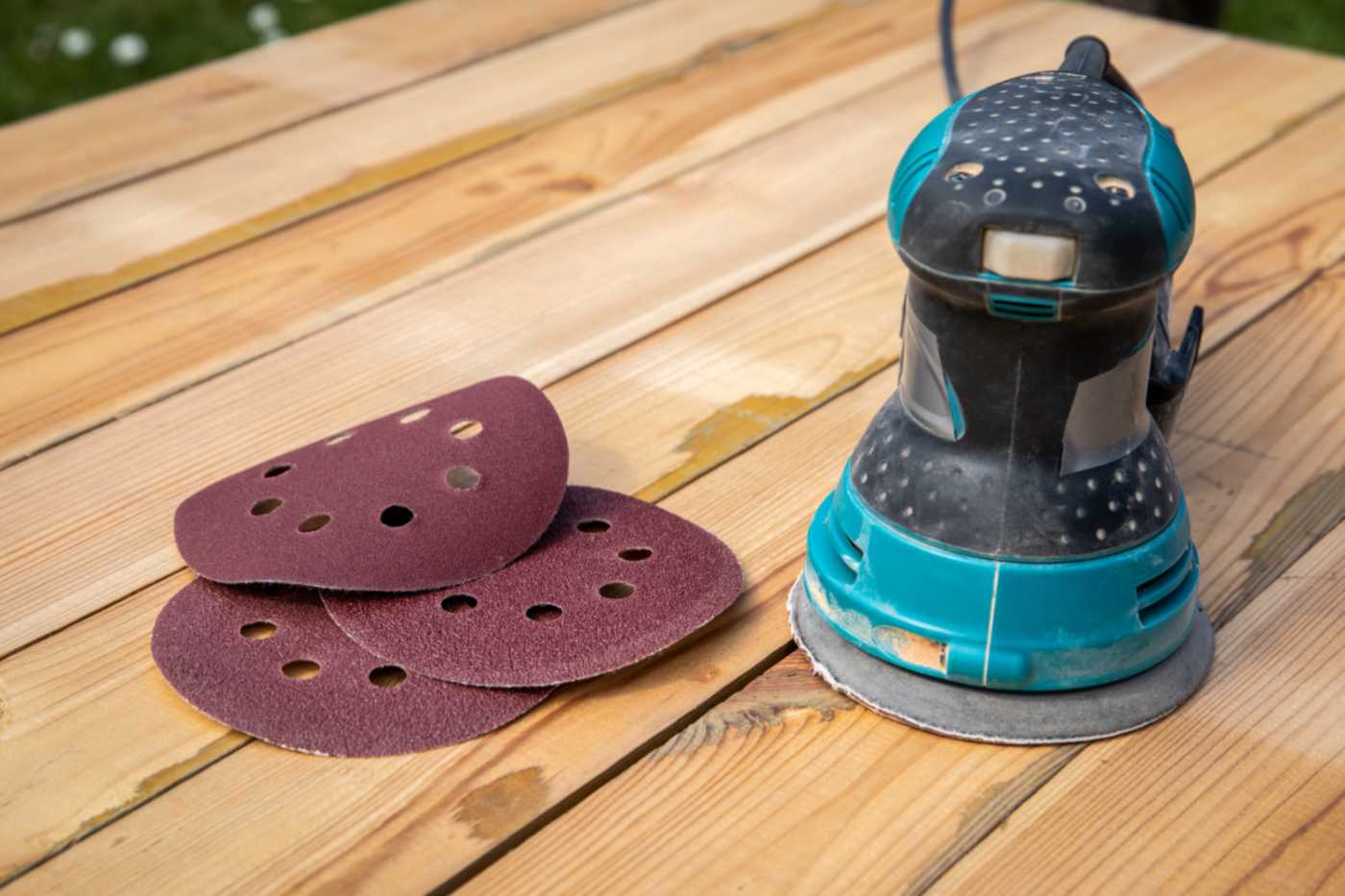Step-by-Step Guide to Sand a Wood Deck
Sanding Wooden Deck Safely
Your wooden deck requires regular care and maintenance. Sanding, staining, and sealing your deck will protect it and preserve its beauty, as well as keep it safe and comfortable to use. If you have noticed splinters, rough boards, or other signs of wear and tear to your deck, it’s time to give it a good sanding. Before you get started, read this step-by-step guide to how to sand a deck to find out the best deck sander to use and the most effective methods for getting your wooden deck smooth again.

Choose the Right Deck Sander
The first thing you want to do is choose the right type of deck sander for your wood deck species and the size of your deck. If you don’t have a lot of experience using a sander, you may want to ask an expert for advice. You can rent a sander from a local home improvement store or hardware store or buy one. There are a few different deck sander options:
- Belt Sander – A belt sander uses a continuous loop of sandpaper. It is powerful and fast, so it’s ideal for large decks and decks that need a lot of work. A belt sander can easily remove old deck finishes and make rough, uneven surfaces level again.
- Orbital Sander – An orbital sander is designed to move in small circles that overlap. It is best for small projects and is easier to use and control, especially if you’re new to deck refinishing. It also produces less sawdust.
- Random Orbital Sander – A random orbital sander functions like an orbital sander but moves in a random pattern to create a very smooth finish.
- Detail Sander – A detail sander is small and designed for sanding tight or awkward areas, like around corners and posts. It can be used after you use a larger sander.
Select the Right Grit for Sanding a Deck
The sandpaper grit you choose will play a huge role in how smooth your deck gets and how long your project takes. You want to choose a high enough grit that you can tackle rough, old, and damaged areas of your deck but not so high that you end up removing healthy areas of wood. Most projects require a 60 or 80 grit sandpaper, but decks that are damaged or weathered, or have a stubborn coating may require a 40 grit sandpaper. The most commonly used sandpaper grits for deck sanding are:
- 40 grit – A 40 grit sandpaper can be used to remove paint, stain, varnish, and other coatings for your deck. It will work well on decks that are slightly weathered or damaged and that have more than one layer of finish.
- 60 grit – A 60 grit sandpaper can remove splinters and smooth out rough edges.
- 80 grit – An 80 grit sandpaper should be used before you apply stain or sealant to your deck or paint it.
- 100 grit – A 100 grit sandpaper is used for final touches on stubborn areas so that your deck is very smooth and ready to be stained.
Prepare Your Deck for Sanding
Before you begin sanding, you’ll want to clean and prepare your deck. Take all of the furniture and other items off of it. Then remove debris and sweep your deck, or use a leaf blower to get rid of dust and dirt. If your deck is very dirty, you can use a soft power washer or spray it with a garden hose. However, you’ll need to wait for it to dry completely before you begin sanding. If there are any majorly damaged areas on your deck, repair them before sanding. Make sure all screws and nails are fully flush with the deck surface, and replace boards that are too damaged for refinishing.
Use a Careful, Thorough Sanding Process
When sanding, you need to use a careful, thorough process to make sure the deck ends up smooth and even. You can watch online videos that show you how to sand between deck boards and get around corners or tight areas. Always sand in the direction of the wood grain and use consistent pressure. Regularly stop and assess the board for imperfections and to make sure it’s evenly sanded. Switch to a smaller detail sander to go around posts, edges, corners, and railings. When you’re finished doing the entire deck, attach the next finest sandpaper grit for a more thorough finish.
Clean Your Deck Before Staining or Sealing
When you’re done sanding, you’ll need to clean your deck again before you stain, seal, or paint it. Use a vacuum to remove sawdust and debris. Then, wipe your deck clean with a soft brush or microfiber cloth. If you use a hose or soft power washer, let your deck dry thoroughly before finishing it.
Call Now for a Consultation for Deck Installation
Dick’s Evergreen Fence and Deck offers custom deck design and installation. We have more than 40 years of experience in the industry and can help you design your dream deck and outdoor living space. Our deck options include real wood decking, vinyl decking, and composite decking. We also offer add-ons like benches, stairs, deck railings, planter boxes, deck covers, and garden accents. Our experts will build a deck that adds beauty to your home and makes your outdoor living space safe and comfortable to use. Call us now or contact us online to schedule a consultation for an outdoor deck in the Portland, OR, area.
